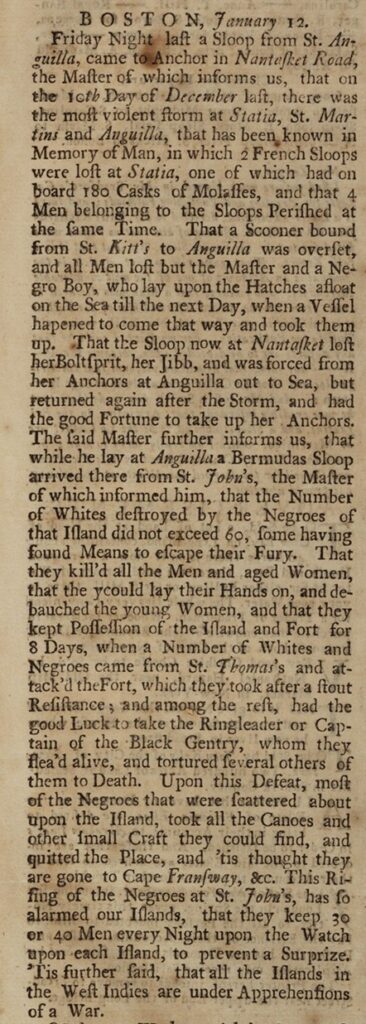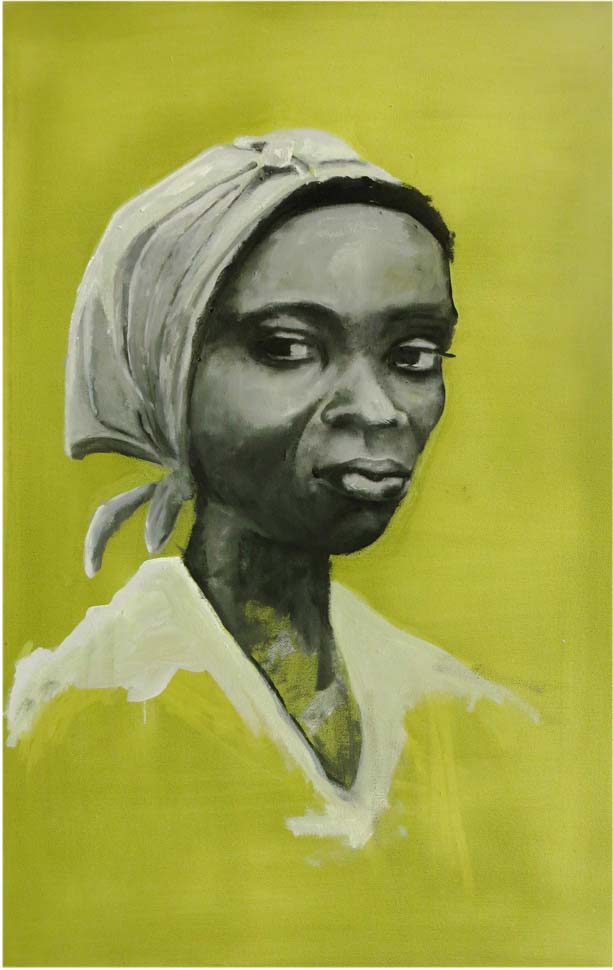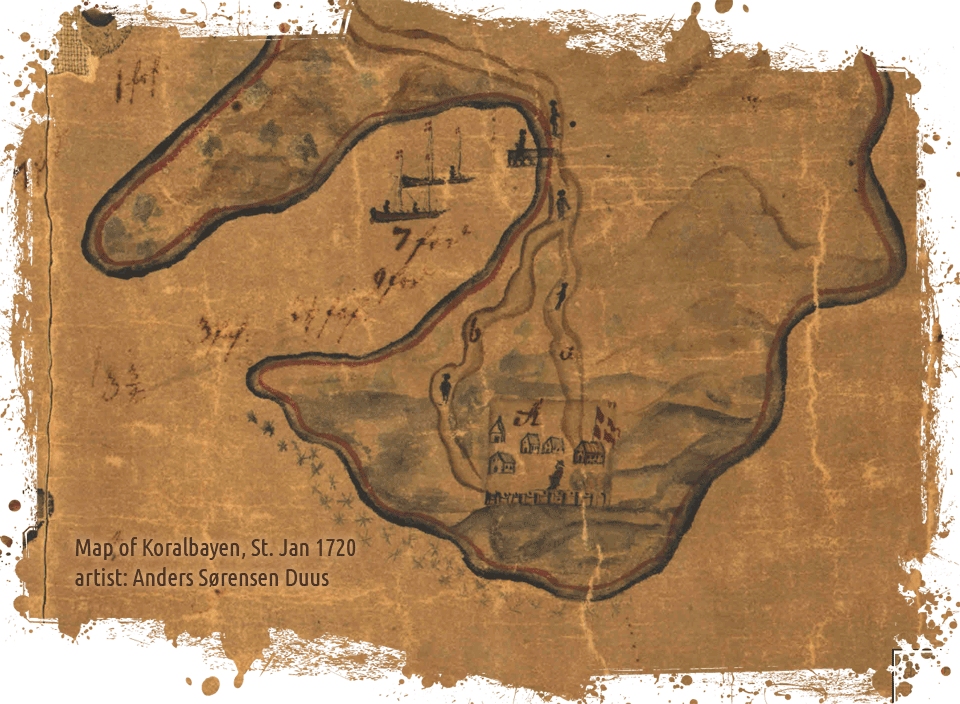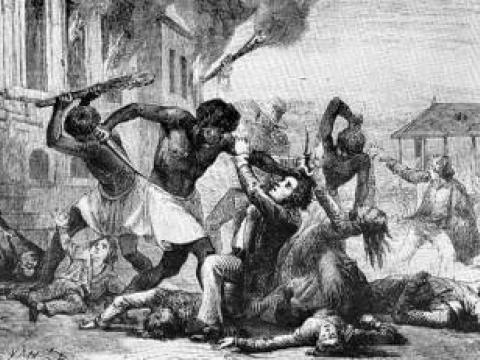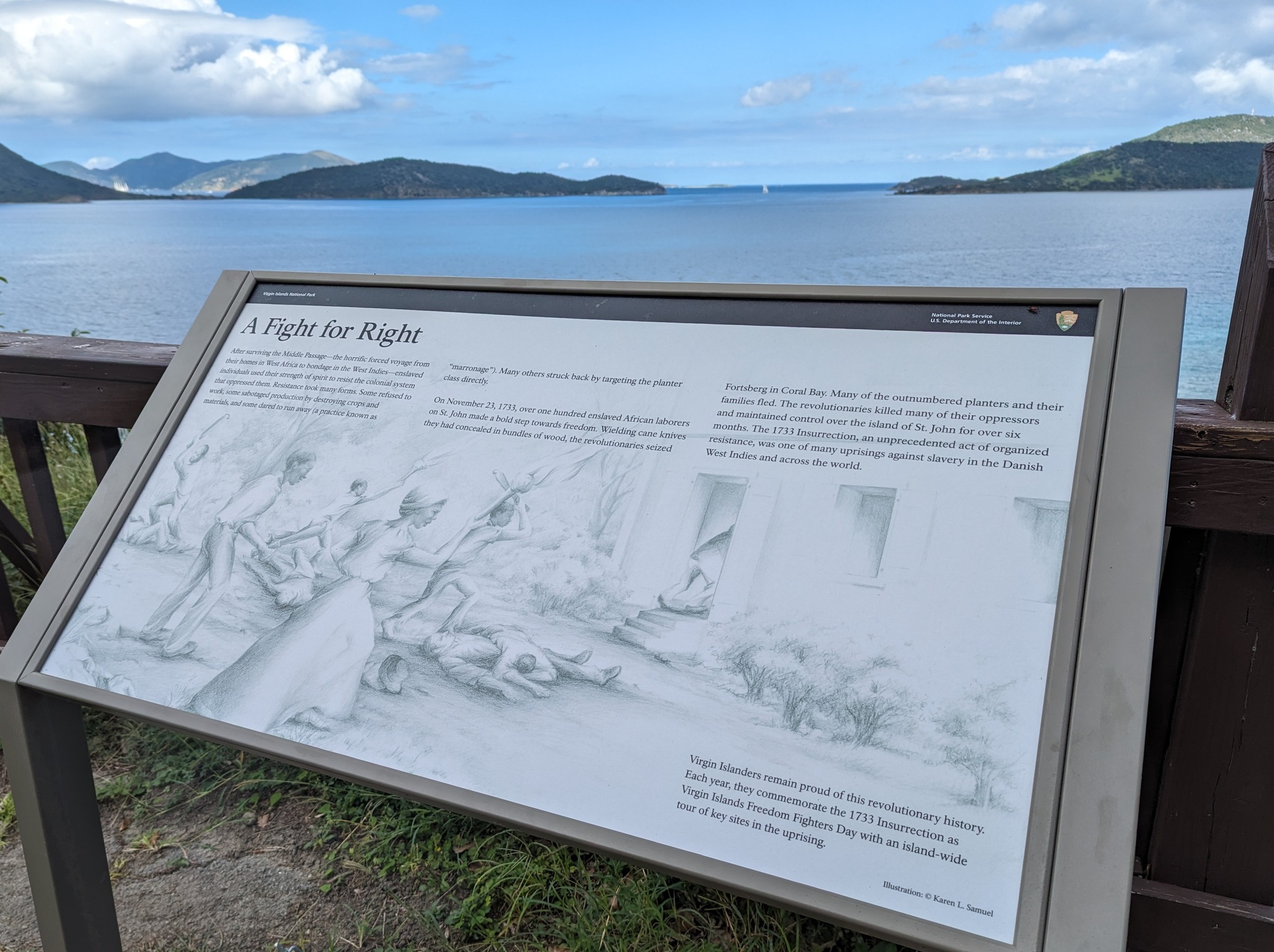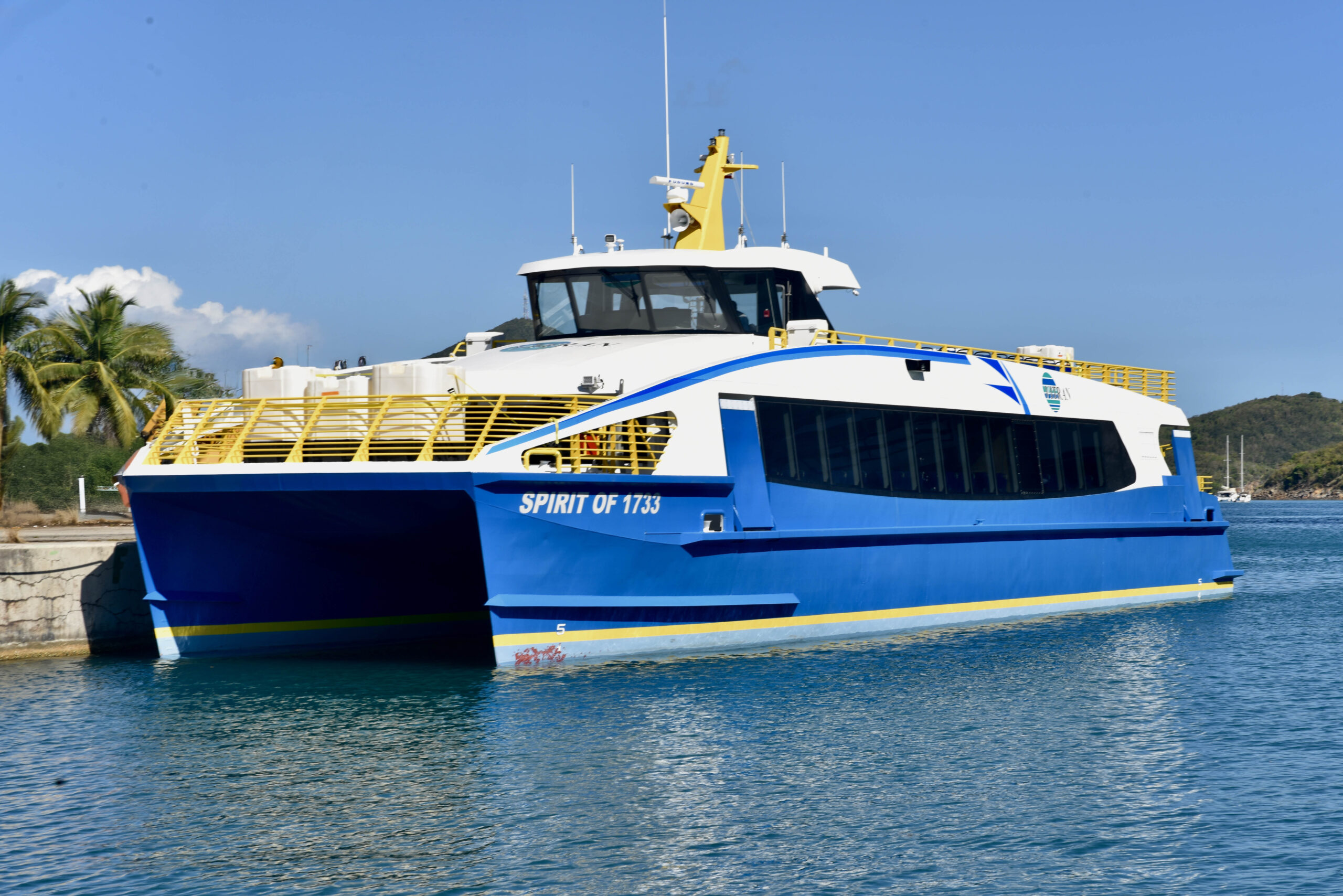
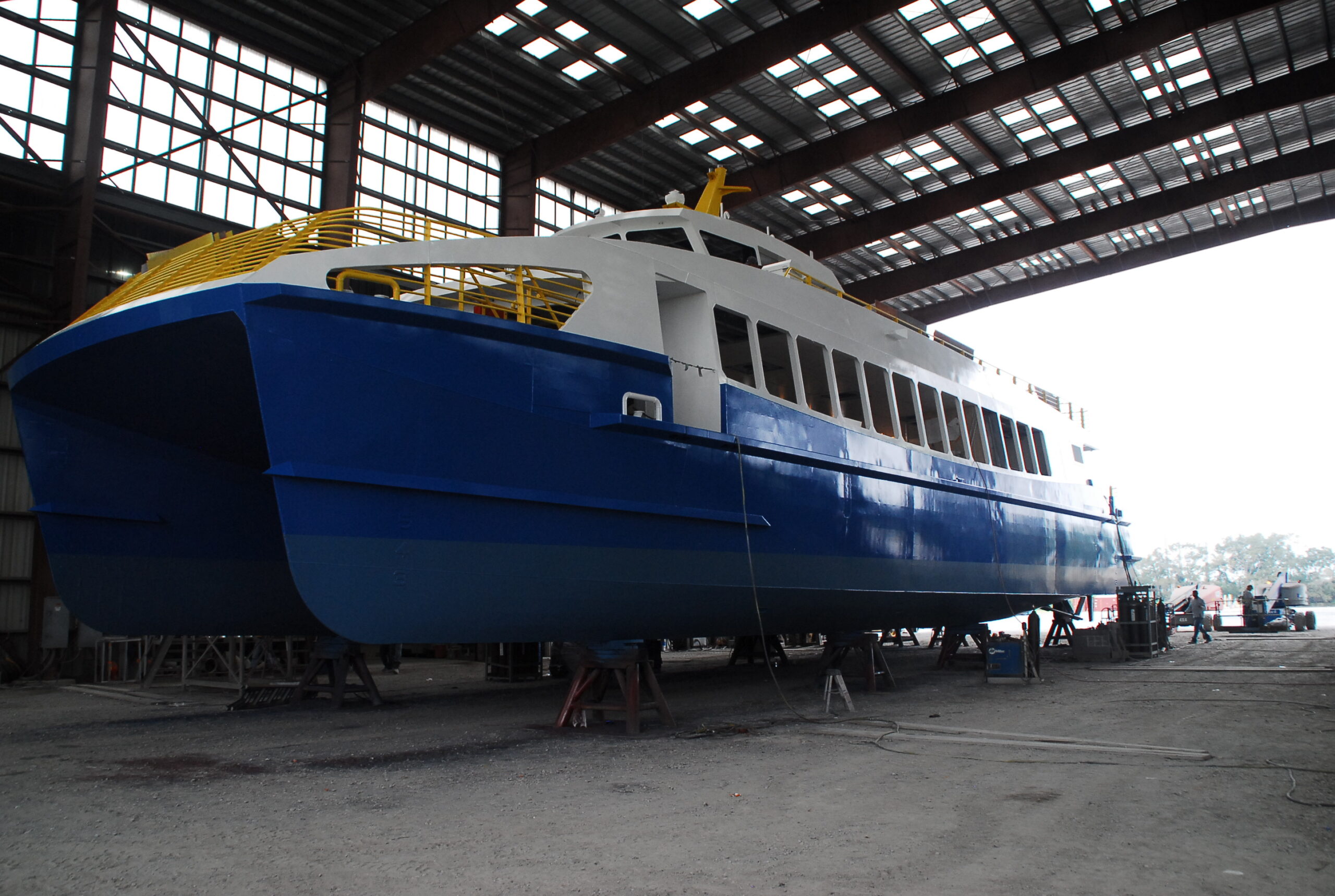

Spirit of 1733
The Spirit of 1733 was commissioned by the VI Department of Public Works in 2023 to primarily service Route 32M between Red Hook, St. Thomas and Cruz Bay, St. John as a part of the Ferry Transportation Program, one of the oldest operating ferry programs in the country.
Chosen by the community as a lasting celebration of the rich history, culture and traditions of the U.S Virgin Islands, the vessel’s name, the Spirit of 1733, honors our brave ancestors on St. John who successfully rebelled against their enslavers.
Ferry Timeline

1733 Slave Rebellion
The 1733 slave insurrection on St. John, also known as the Slave Uprising of 1733, started on Sankt Jan in the Danish West Indies (now St. John, United States Virgin Islands) on November 23, 1733. 150 African slaves from Akwamu, present-day Ghana, revolted against the owners and managers of the island’s plantations. In 1733 the population of African slaves on St. John was more than five times as large as that of the European inhabitants: 1,087 slaves to 206 whites. According to Danish records based on the testimony of suspected rebels, enslaved individuals named as Queen Breffu, King Claes, Printz van Juff, Kanta, Juni, Prince, and Thoma, took control of St. John’s military fort in Coral Bay during a delivery of firewood–in which they had concealed weapons–and took control of most of the island. They intended to resume crop production under their control. Led by these individuals and lasting several months into August 1734, this slave rebellion was one of the earliest and longest slave revolts in the Americas.
Danish efforts to extinguish the insurrection bore little chance for success. The Akwamu fighters drove the Danish authorities off the island in each instance. The British authorities feared that the insurrection would inspire a revolt in the BVI and offered help fighting the Akwamu. They provided 60 troops but were ambushed when they came ashore and immediately retreated to Tortola. The fighting between the Akwamu and the European planters raged on for six months. The Danes drew on a newly formed alliance with France who sent approximately 400 soldiers from nearby Martinique. Defeat was imminent, and many Akwamu fighters chose to take their own lives to escape brutal deaths at the hands of the Danish. The 1733 Slave Insurrection was the first instance in which enslaved people took control of a colony. It served as a spark to later slave revolts that would take place. We can take inspiration from the strength and resilience of the Akwamu fighters. These men and women risked their lives for freedom. They took fate into their own hands as they rose against their oppressors.
Documented Account
The West Indies, or Caribbean islands, where slavery predominated, were vitally important to commerce and trade in the colonies, and revolts there were particularly newsworthy. In this issue of the New-York Weekly Journal, dated March 11, 1733[/4],* editor John Peter Zenger printed a sloop captain’s report on a takeover by enslaved people of the Danish island of St. John in November 1733.
BOSTON, January 12.
Friday Night last a Sloop from St. Anguilla, came to Anchor in Nantasket Road, the Master of which informs us, that on the 10th Day of December last, there was the most violent storm at Statia, St. Martins and Anguilla, that has been known in Memory of Man. . . . The said Master further informs us, that while he lay at Anguilla a Bermudas Sloop arrived there from St. John’s, the Master of which informed him, that the Number of Whites destroyed by the Negroes of that Island did not exceed 60, some having found Means to escape their Fury. That they kill’d all the Men and aged Women, that they could lay their Hands on, and debauched the young Women, and that they kept Possession of the Island and Fort for 8 Days, when a Number of Whites and Negroes came from St. Thomas’s and attack’d the Fort, which they took after a stout Resistance; and among the rest, had the good Luck to take the Ringleader or Captain of the Black Gentry, whom they flea’d alive, and tortured several others of them to Death. Upon this Defeat, most of the Negroes that were scattered about upon the Island, took all the Canoes and other small Craft they could find, and quitted the Place, and ’tis thought they are gone to Cape Fransway, &c. This Rising of the Negroes at St. John’s, has so alarmed our Islands, that they keep 30 or 40 Men every Night upon the Watch upon each Island, to prevent a Surprize. ’Tis further said, that all the Islands in the West Indies are under Apprehensions of a War. . . .
New-York Weekly Journal
